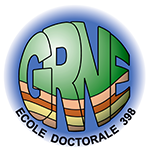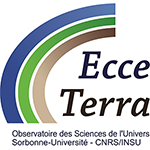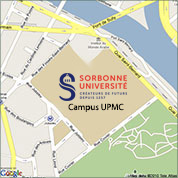Séminaire ISTeP - Adrien Romagny
(ISTeP)
Geodynamic evolution of the western Mediterranean during the Late Cenozoic: a new reconstruction using GPlates
The Late Eocene-Early Oligocene is a key-period for the geodynamic evolution of the Western Mediterranean. Due to complex lithosphere/asthenosphere interactions (slab roll-back, slab-tear, slab break-off, asthenosphere upwelling, etc.), deformations in this area became more driven by internal and local forces related to slab dynamics than by the large-scale Africa/Eurasia convergence. During the Oligocene, this led to a widespread extensional regime that affected the upper plates of the different subduction systems and dismantled the mountain chains formed previously (Paleocene-Eocene times). Numerous and very different models have been proposed in an attempt to explain the geodynamic evolution of this area. However, crucial questions are still debated. Among these questions, the reasons of the drastic change of tectonic regime observed everywhere at Eocene-Oligocene transition remain unexplained. How did the initiation of slab retreat and the inception of back-arc rifting induce these changes in the Alps, the Pyrenees and everywhere? Another unsolved question is the complex interactions between shortening and back-arc extension in the Alboran Domain and the timing of the emplacement of the Ronda-Beni Bousera peridotite massifs in this context. In order to answer these questions a prerequisite is to dispose of a precise kinematic framework that is the goal of this study, combining kinematic, structural, metamorphic, paleomagnetic, magmatic and geophysical data. We performed kinematic reconstructions using GPlates, following the principle of non-rigid domains to avoid problems due to rough approximations linked to rigid blocks. Main structures, paleomagnetic data and amounts of shortening/extension from balanced cross-sections constituted the main constraints used for the calculation of motions of more than 650 polylines. These reconstructions were processed backward, from the Present to the Eocene-Oligocene boundary (i.e. 35 Ma), in order to be as free as possible from any pre-existing model. Based on these detailed reconstructions we discuss a geodynamic model and propose answers to some pending questions, such as the role of inherited major structures.
08/06/2018, Salle Fourcade à 12h30
Chiffres clés (Mars 2025)
L'ISTeP comprend 131 membres dont :
Permanents (66)
- Professeurs : 17 (+2 PAST)
- Maîtres de conférence : 26
- Directeurs de recherche CNRS : 1
- Chargés de recherche CNRS : 1
- ITA : 19
Personnels non permanents (65)
- Collaborateurs bénévoles / émérites : 17
- Chaire de professeur junior : 1
- Enseignants-chercheurs contractuel : 2
- 1 MCF accueil en délégation
- ATER et Post-Docs : 9
- Doctorants : 32
- ITA-BIATSS : 3





